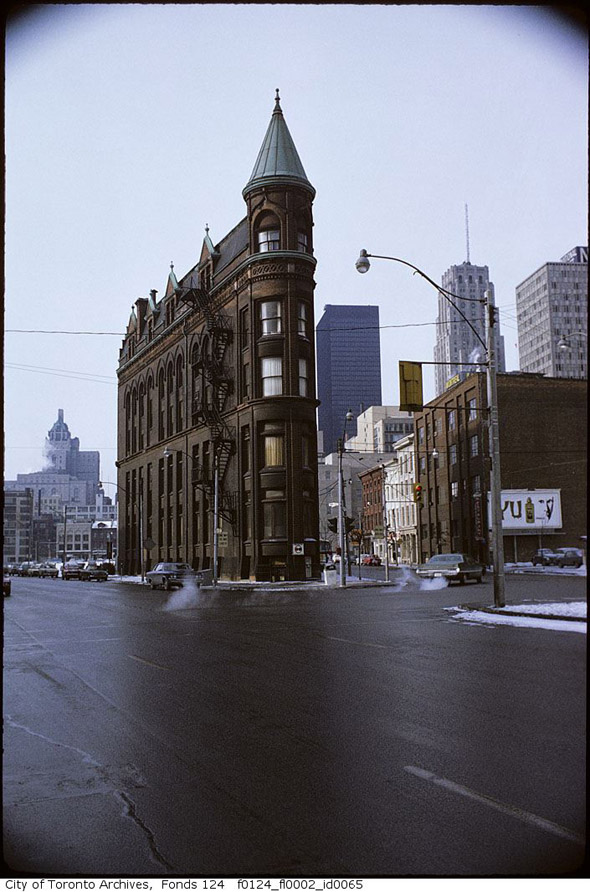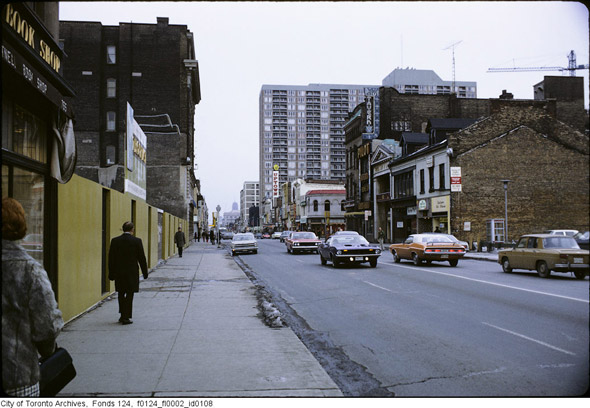The thing is, in answer to this question should we be considering the 'tourist' sites, postcard views, and private developments or should we be looking at the more day-to-day urban experiences that define a city?
Looking at the pictures posted by nstuch in the 'Shabby Realm' thread you can contrast some of these minor details:
... and though I understand that you can find places like the following in any city these photos (again by nstuch) are in very popular, central Toronto areas:
The reality is that these streetscapes are typical of Toronto, no matter where in the city you are. To my thinking they do not make the city a comfortable, engaging, or pleasant place... and certainly not beautiful.
*Disclaimer - I would emphasize that this doesn't mean that Toronto isn't engaging in other ways, or visually interesting in a 'messy urban' way, or however you want to describe it.
Thank you tewder for reminding us of what most of Toronto really looks like. It may be liveable, comfortable, edgy, and oh-so-hip, but it's not beautiful.
I've been struck by how much we've all been trying to define or quantify what urban beauty could be, and couldn't think of anything better than Jack Diamond's thoughts from last year's Walrus-sponsored debate on whether Toronto will EVER be beautiful:
"In supporting the motion “Be it resolved that Toronto will never be beautiful,†I want to make clear that we are not talking about its livability, but its beauty, or rather, its lack thereof. An old pair of worn slippers may be comfortable, but hardly beautiful. In many respects Toronto is a wonderful city in which to live, but it cannot be called beautiful.
So, let’s begin by defining “beautiful†as it applies to cities. There is, I believe, general consensus that Paris, Venice, St. Petersburg, and perhaps Dublin are among the most beautiful cities in the world. What characterizes their beauty is:
First, their man-made forms. Streets and avenues, parks and squares, that are planned and designed together with the buildings that define them; that terminate or provide gateways to attractive, sometimes dramatic vistas; that enhance the monuments contained by them; and that are embellished by the landscapes that are an intrinsic part of the whole.
Second, they not only have a relationship to their major geographical features, but they celebrate them, whether canals, rivers or oceans.
Third, most of all they were lucky enough to be built at times when an architecture of human scale and refined detail was prevalent. Above all there is a consistency of sufficient magnitude to impart a strong character to the place. When one lifts one’s eyes and looks in any direction in those cities, one’s heart is also lifted.
Fourth, they have the fiscal and constitutional powers to spend as they choose.
The resolution we are to debate is that Toronto will never, in those terms, be beautiful. So now let us compare Toronto to that which, by definition, constitutes a beautiful city.
First, Toronto’s configuration is one of relentless grids, unless it’s the confusing maze of the suburb; streets, squares, and buildings are not planned, designed, and built as part and parcel of one another; parks are separate entities and squares few and far between; the landscape is an afterthought.
Second, we can hardly claim to have celebrated our relationship to our greatest geographical asset, the lake. The way we build our public spaces makes no accommodation for our severe winter, which would indeed give authentic character to our city — unless, of course, you consider our downtown pedestrian sewers beautiful.
Third, Toronto was built in a series of building booms, all at the wrong time, in terms of the then-prevailing architectural style: either that of Presbyterian narrowness and architectural mediocrity, or the architecture of real estate aggressiveness, or, lately, of so-called iconic architecture, whose iconography is only that of extreme individualism, profligate waste, and exceptionally poor form, baubles for the amusement of provincial taste. Taken together, an architectural cacophony.
Worst of all are the suburbs. They ensure socio-economic segregation (not a pretty thing), and are made up of endlessly banal architecture. We have to remember that by far the preponderant area of the city is the low-density residential sprawl that surrounds the core and the inner city neighbourhoods.
Fourth and finally, constitutionally the city is a supplicant, begging for crumbs at the provincial and federal tables, where those governments dine scrumptiously off the proceeds of its urban vassals. This constitutional arrangement is not about to change any time soon. As a consequence we have not even enough of the wherewithal for essential infrastructure and basic services, let alone for a planning and restructuring of the city to render it beautiful. The likelihood of provincial and federal politicians giving up fiscal power to the city is about as likely as those opposing this resolution tonight of winning an unwinnable debate.
These physical, geographical, attitudinal, and constitutional constraints make it impossible to shape what is a very ordinary place into a thing of beauty."











